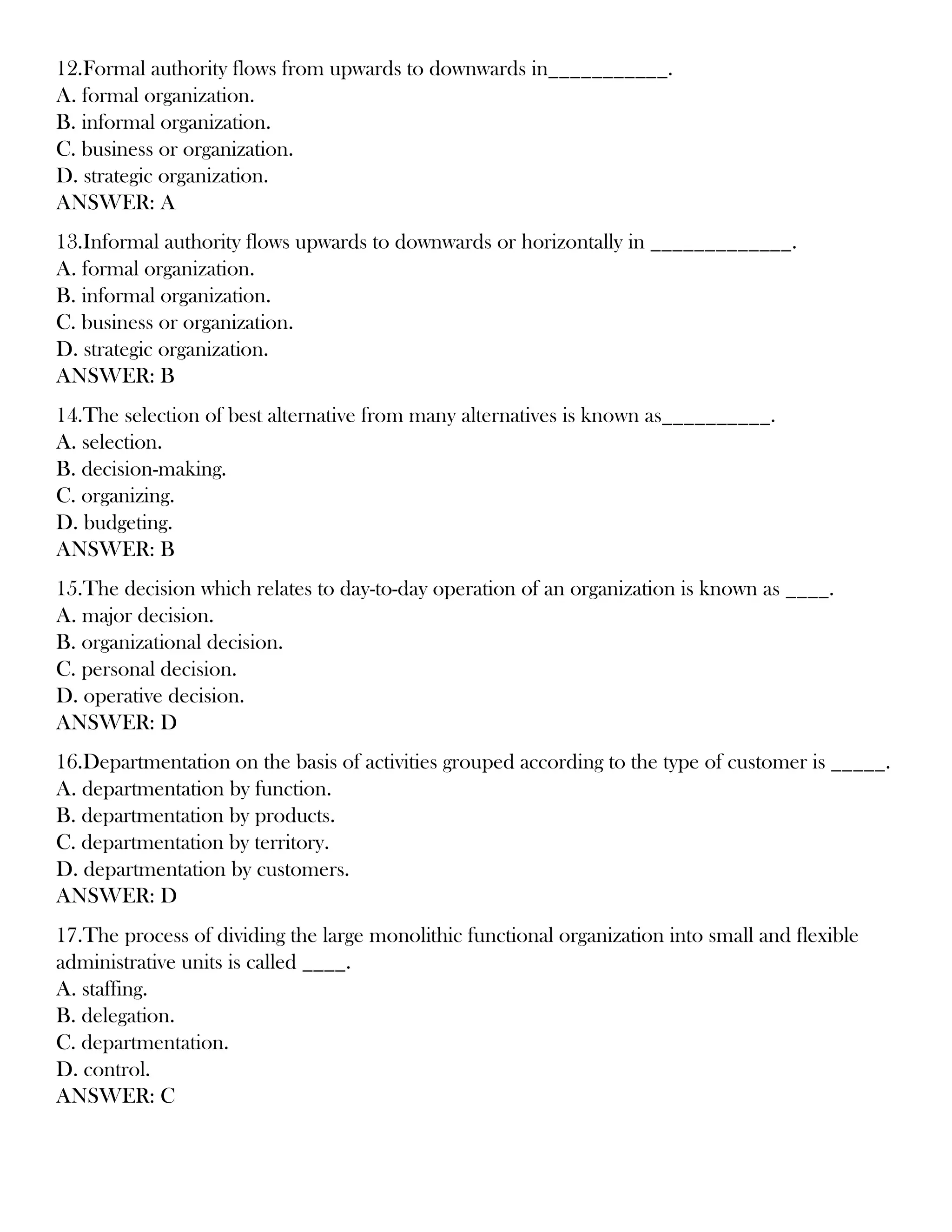This document contains 53 multiple choice questions about management principles and functions. It tests knowledge about topics like the definitions of management, management functions, organizational structure, communication, and decision making. The questions are accompanied by answers to self-check understanding.








